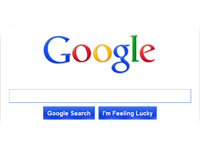
Let your site sing for its’ supper!
Did you know: the world’s population is some seven billion; there are about six billion mobile phones; there are some four billion toilets; Australia has some seven million more mobile phones than there are people?
One can draw some intriguing conclusions from these numbers. For instance, it looks as if investment in toilet roll shares is a sound strategy but that is not what is blindingly obvious. The mobile decade, or is it century, is well and truly here and how many of us noticed that?
Almost as an aside, both Apple and Google, in its Android mantle, are about to release their concepts of the Dick Tracey watch. For those of you who are much, much, younger than I need to know that Dick was a famous cartoon sleuth who had a wrist watch radio. I doubt that what our developers have in mind is going to be quite as simple as that. We’ll have to wait and see.
In the meantime it is interesting to note that Google has just announced it is going to cut itself adrift from a code structure used by almost all designers of fancy web page effects. Not too surprising since its browsers and Android systems use very different code structures.
All web browsers have one common task and that is to generate images of what you are viewing. That part of their code is called the rendering engine. It seems like Google has given this a lot of thought and the company believes that it will be able to remove more than 7000 files from its rendering engine compared to the current code (WebKit), which means some 4.5 million fewer lines of code. That means everything we see will happen very much faster. According to Adam Barth, who is the software engineer at Google, “This had slowed down the collective pace of innovation.”
That has given birth to a new rendering engine called Blink.
The reason Google wants Blink is down to one thing: the post-PC era code is long in the tooth and is a product of PC thinking. Google wants to change that.
There’s no doubt that Apple has effectively managed the project and transformed it into a capable post-PC era rendering engine but it is clear that if Google can eliminate 4.5 million lines of code from the project, then there’s a lot of dead wood in there. And while having all that dead wood buried in the code base might be fine on desktop and notebook systems with a beefy processor and bags of RAM, on mobile systems with limited processing power, storage, RAM and power, a more focused, streamlined rendering engine would be better for all.
The next development is at this stage somewhat curious but our friend Facebook has just announced that they are about to release their own phone. Last week Facebook unveiled the closest thing to a Facebook Phone that exists. This comes in the form of a new “family of apps” for Android and an actual phone from HTC with the family pre-loaded. The experience is called Facebook Home.
Facebook’s mission with this offering is to make your phone more about people rather than about apps. The core feature of Facebook Home is the Cover Feed, which takes over as your home screen and lets you swipe through the latest photos and updates from your Facebook News Feed. You can also interact with the posts from there as for example liking, commenting, etc.
But it doesn’t end there. Notifications appear on the home screen in a visual way. All notifications will show up on the home screen as separate entries. Tapping the notification will bring up the Facebook app for further interaction. If you want to get rid of it, you can just toss it off the screen. Holding one of the notifications will lump them all together if you so wish to disregard all of them at once.
To even access your other apps in the first place, you have to hold the image of your face that appears (currently a little image of Mark Zuckerberg in the demo I saw) and swipe it up to the appropriate place.
There is a feature called Chatheads that allows your Facebook and text messages to follow you through your other apps. Messages via images of little heads of your friends will show up at the top right of your screen regardless of what app you are in.
Facebook indicated that it wants to provide an experience like this across all phones. This is easier said than done, however. Facebook chose Android because of its open source nature that allows it to take over your phone in the manner it does. It’s not so easy for all operating systems. Zuckerberg specifically talked about how Apple’s control over iOS simply does not allow it to offer this kind of experience on an iPhone. It would take a partnership for that to happen.
The story is longer but I am sure you have realised that with a billion users of Facebook social media and interactivity cannot be ignored.
In like vein Google has begun marketing their Google Glass that looks like a pair of glasses with one lens missing. What that one lens can do interactively is magic.
My point is to convince you the web is heading interactively directly to mobile phones and tablets. During the last few months I have conducted my own survey using mobile sites that are running in parallel with conventional web owned by three of my clients. These sites run on servers that I coded to detect whether desk top or mobile devices were visiting. That code simply sniffed out the device and directed it to the appropriate “web site”. To my mild surprise all sites, despite their different targets, showed a majority of visits came from mobile phones.
That is consistent with what the advertising industry has already learnt. Ads seen on TV have the interested viewer going directly to the advertiser’s web site using a mobile phone. In like vein, traffic density builds up after late afternoon so that we can assume our clients/customers make their purchasing decisions while relaxing on their couches at home.
The future web site is starting to look like an all singing and dancing TV ad that permits user interaction. Don’t loose your marketing edge by failing to make your web site mobile.

AccomNews is not affiliated with any government agency, body or political party. We are an independently owned, family-operated magazine.



